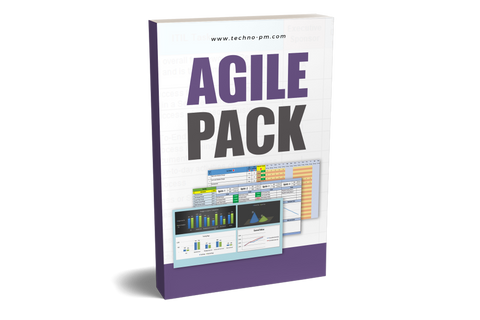What is difference between Agile and Scrum Methodologies?
What is Agile?
Agile is a well-known process that many businesses are implementing to increase their productivity. Agile produces more flexibility, efficiency, and higher quality results than traditional methods. Its goal is to make sure you are delivering the "right" product to your customer. It focuses on iteration and collaboration as well as constant reflection.

What Is an Agile Team and How to Form Them?
Agile teams are self-organizing, cross-functional groups of people who work together to achieve a goal. These types of units often have the following characteristics:
They use software development techniques that emphasize working productively in short time-frames (i.e., iterations or sprints) and adapting quickly when things go wrong.
Each team member has input into how work is done on their project.
The group produces one workable solution and only delivers that solution once it meets its quality standards.
Team members can choose what they do each day from options provided by the organization, which can include any combination of activities, including designing, coding, testing, and documenting.
Many factors go into building a legendary agile team, but there are specific steps you can take that will make the process easier:
- Define roles and responsibilities early on:
- Match people with complementary skills:
- Create robust processes from day one:
- Foster feedback loops so that everyone is engaged in decision-making at every level of your organization:
- Encourage autonomy among your team members by giving them ownership over projects:
What is Scrum?
Scrum is a framework for developing and maintaining complex software. Scrum has four roles that work collaboratively to produce the best possible product: a Product Owner, Team Member, growing team, and Scrum Master. In addition, four events occur in every sprint: Sprint Planning Meeting, Daily Stand-up Meeting, Sprint Review Meeting, and Retrospective Meeting.

- Product Owner: The Product Owner is responsible for determining what the team needs to complete. This person can be a business executive, marketing specialist, or product developer and will have input from many different sources about what should happen to meet their goals.
- Team Member: Team Members area unit people on the project with specific skillsets (e.g., design thinkers) and information required by all stakeholders concerned in software system creation.
- Developing Team: The scrum development method is an Agile software system development framework for managing advanced development. It divides the work into sprints, that area unit time-boxed iterations of 1 to four weeks long. The event team in Scrum may be a key part of the success of agile comes. They're liable for developing and testing software systems.
- Scrum Master: A Scrum Master is a person responsible for ensuring that the scrum process runs smoothly. They monitor the work of a team, especially in terms of how well they stick to the rules and procedures laid out by Scrum.
Difference Between Agile and Scrum?
The distinction between agile and Scrum is within the method that they're used. Agile may be a term that refers to a technique of software system development. Scrum, on the other hand, is A structure for manufacturing products and services. The two ideas have different functions; however, each is applied to any project at any time.
In agile, a product owner is responsible for coming up with and prioritizing tasks that need to be completed. A project manager then breaks down those tasks into smaller parts to set deadlines, track progress, and ensure quality while mindful of cost constraints. The team members themselves are given some freedom in completing their respective tasks so long as it aligns with the company's overall goals; this includes modifying requirements when necessary or slowing production if they reach capacity limits.
Scrum is an organizational structure where no designated individual has responsibility for all aspects of producing products or services. Instead, Scrum divides responsibilities among three roles. The focus of Scrum is to make sure that all stakeholders are consulted at every step of the process, allowing them to give feedback as needed.
The Ingredients for Managing Agile Groups With Scrummage:

- Project Charter - A project charter lays out what must be done, who is going to do it, and how it's going to get done
- Product Backlog - The product backlog lists all the work that needs to be completed in order of priority.
- Sprint Planning - This is the most critical meeting in an agile sprint. In this meeting, you'll plan out how many tasks each team member will work on and figure out what those priorities should be for that period.
- Sprint Planning Meeting - Sprints are time-boxed periods where team members can complete their tasks.
- Sprint Burn-down Charts - These can assist you to spot trends in project progress, so you'll regulate once required, like adding resources or dynamical priorities. They conjointly show, however, shut the team is functioning towards their goal of delivering all their commitments every sprint. A burn-down chart helps keep everybody in charge of finishing tasks and staying on track!
- Daily Stand-up Meetings - These meetings allow each team member to be in sync with one another.
A Project Needs Scrum:
Scrum is a framework for developing software. It's an agile approach to project management, which means it focuses on the result being delivered quickly and with quality. Scrum accomplishes this by dividing work into short sprints of development that have specific goals.
The goal of a sprint is to have something tangible for the end-user at the end. This might mean you reach your finish line with an alpha version (a working prototype) or beta versions, which are more stable and contain all the features that were planned out in advance. The basic idea behind Scrum is "always be developing." That means even if you're not about to release anything by a specific date, take time regularly to work on improving what's already there.




